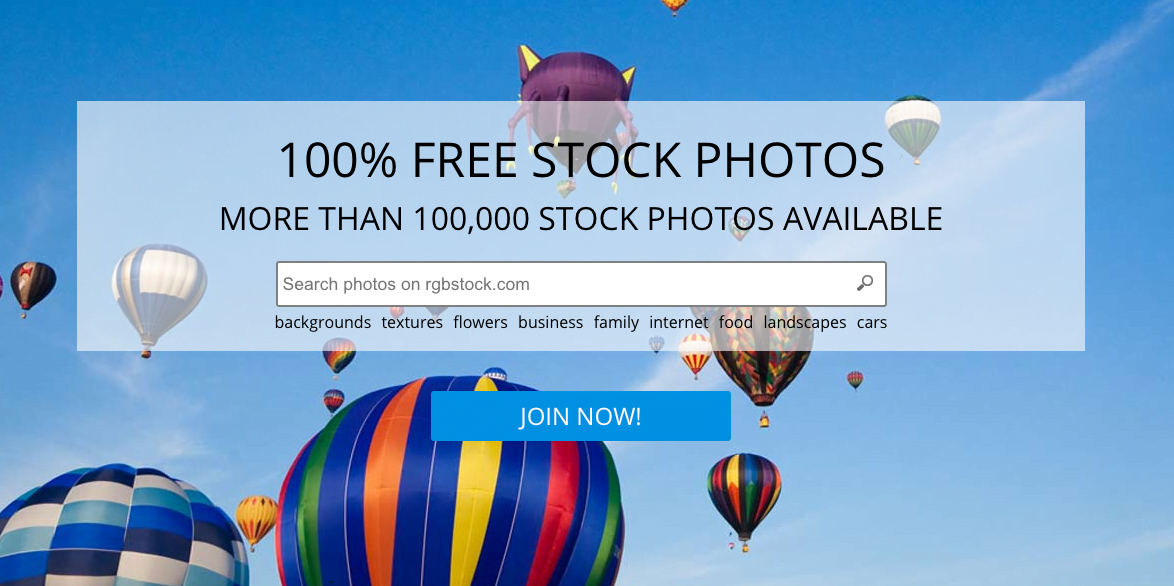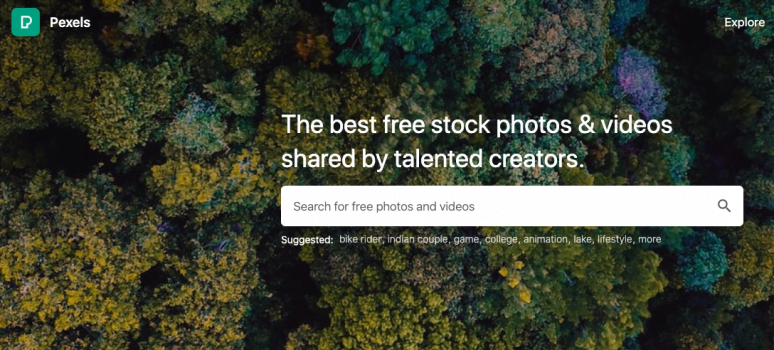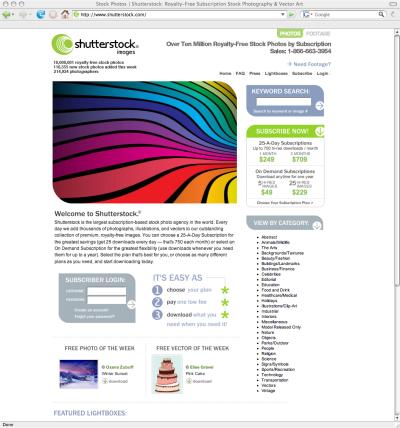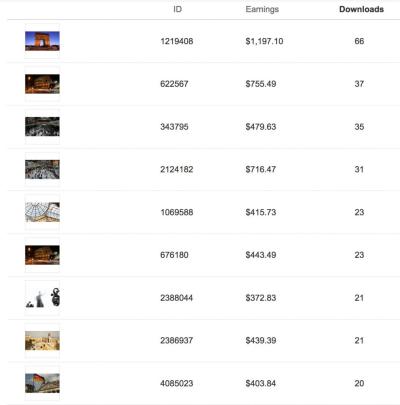Shutterstock is one of the most popular stock image platforms out there, offering millions of high-quality photos, vectors, and videos for creative projects. Whether you’re a designer, blogger, or small business owner, it’s a go-to resource for professional visuals. But, as great as it is, Shutterstock has its downsides. The most common concern? Cost. With subscription plans and image packs, those expenses can add up quickly—especially if you only need images occasionally. Plus, licensing restrictions can sometimes be confusing or limiting. So, if you’re looking for budget-friendly options without sacrificing quality, you’re in the right place! Let’s explore some of the best free alternatives to
Top Free Image Platforms Similar to Shutterstock

Good news! You don’t always have to pay for top-tier images. There are several fantastic platforms that offer high-quality, free images that can rival what you’d find on Shutterstock. Here are some of the best:
- Pexels: Known for its vast library of free stock photos and videos, Pexels provides images that are beautifully curated. All content is free for personal and commercial use, with no attribution required, making it super convenient for quick projects.
- Unsplash: Unsplash is a favorite among creatives for its stunning, high-resolution images. Its community-driven approach results in a diverse collection covering almost every niche imaginable. Best of all, you can use the images freely without attribution, though giving credit is appreciated.
- Pixabay: Offering not only photos but also vectors, illustrations, and videos, Pixabay is a versatile platform. Its content is released under Creative Commons CC0, meaning you can use the images without restrictions, even commercially.
- Freepik: While Freepik offers free images, it also has premium options. The free downloads come with attribution requirements, but the platform hosts a huge variety of vectors, PSD files, and photos suitable for professional designs.
- Burst by Shopify: Burst is designed with entrepreneurs and small business owners in mind. It offers high-quality images for free, with a focus on business themes, lifestyle, and trending topics. The images are free for commercial use with no attribution needed.
These platforms are excellent resources for anyone looking to access high-quality, free images without the hassle of licensing fees. Whether you need a quick photo for a blog post, website, or social media, these sites will have you covered. Keep in mind that while they’re free, it’s always good to double-check each platform’s licensing policies to ensure proper use. Happy hunting for your perfect images!
3. Criteria for Choosing a Good Shutterstock Alternative

When you’re on the hunt for a great free Shutterstock alternative, it’s important to know what to look for. Not all free image sites are created equal, and what works well for one project might not be ideal for another. So, let’s talk about some key criteria that can help you pick the best platform for your needs.
1. Image Quality
First and foremost, high-quality images are a must. Look for sites that offer photos with high resolution, sharp details, and good color accuracy. Nothing kills a design or presentation faster than pixelated or blurry images. Good platforms often have curated collections or quality control measures in place to ensure you get professional-grade visuals.
2. Variety and Quantity of Images
A diverse and extensive library means you’re more likely to find the perfect image for your project. Check if the site offers a wide range of categories—from nature and technology to business and lifestyle—and see if their collection is regularly updated. The more options you have, the less you’ll need to settle for something less ideal.
3. Licensing and Usage Rights
This is super important. Even if an image is free, you need to make sure you can use it legally for your intended purpose—whether it’s for commercial use, social media, or personal projects. Read the licensing terms carefully. The best free sites usually offer images under Creative Commons licenses or their own clear usage terms, which allow for broad use without attribution or with minimal restrictions.
4. Ease of Navigation and Search
No one wants to spend hours scrolling through endless pages. A user-friendly interface with a powerful search function, filters, and categories can save you time. Look for sites that allow you to quickly narrow down options by color, orientation, size, or subject matter.
5. Download Options and File Formats
Check if the site provides different download options—like JPG, PNG, or even vector formats—and if you can choose the resolution you need. Some sites also allow batch downloads, which can be a real time-saver if you need multiple images.
6. Community and Support
A supportive community or responsive customer service can make a big difference, especially if you encounter issues or have questions. Some platforms also offer user ratings or comments, helping you gauge the quality and relevance of images before downloading.
4. Features to Look for in Free Image Download Sites
Beyond the basics, there are specific features that can elevate your experience when using free image sites. Here’s what you should keep an eye out for:
- High-Resolution Downloads: Ensure the platform offers high-res images suitable for print, large banners, or detailed design work.
- Advanced Search Filters: Filters by orientation (landscape, portrait), color, category, or license type help you find exactly what you need faster.
- Collections and Curated Galleries: Many sites organize images into collections or themes, making it easier to discover trending or seasonal images.
- Regular Updates: Fresh content keeps your options current and relevant, especially if you’re working on ongoing projects.
- Attribution Options: Some images require attribution, so check if the site clearly states attribution requirements and if there’s an easy way to attribute properly.
- Integration Capabilities: Features like direct embedding, API access, or plugins for design tools (like Canva or Photoshop) can streamline your workflow.
- Community Contributions: Platforms that allow photographers and artists to contribute can expand the library and bring in unique, diverse visuals.
In the end, the best free image download site for you depends on your specific needs—be it quality, variety, ease of use, or licensing flexibility. Keep these features and criteria in mind, and you’ll be well on your way to finding a Shutterstock alternative that fits your creative projects perfectly!
5. Comparison of Popular Free Image Resources
When you’re on the hunt for high-quality images without breaking the bank, there are several free resources out there that can really come in handy. But not all platforms are created equal, so let’s break down some of the most popular options and see what each has to offer.
First up is Pexels. Known for its vast library of free stock photos, Pexels offers a wide range of categories—from nature and technology to lifestyle and business. One of the big advantages is its user-friendly interface, making it easy to find what you need quickly. All images are licensed for free use, even commercially, with no attribution required, though giving credit is appreciated.
Next, we have Unsplash. Unsplash is famous among designers and marketers for its stunning, high-resolution images. The platform’s community of photographers contributes fresh content daily, so you’ll always find something new. The licensing is very liberal, allowing for personal and commercial use without attribution, but it’s always good practice to credit photographers when possible.
Then there’s Pixabay. This platform not only offers photos but also vectors, illustrations, and videos. It’s a great all-in-one resource if you need more than just photographs. The content is licensed under Creative Commons CC0, which means you can copy, modify, and distribute the images freely, even for commercial purposes, without asking permission or giving credit.
How do they compare? Here’s a quick overview:
| Features | Pexels | Unsplash | Pixabay |
|---|---|---|---|
| Image Variety | Wide range, includes lifestyle, nature, tech | High-quality, artistic photos | Photos, vectors, illustrations, videos |
| Image Quality | Very good, curated selection | Excellent, often professional-grade | Good to very good, diverse formats |
| Licensing | Free for personal & commercial, no attribution needed | Free, no attribution required, liberal license | Creative Commons CC0, free for any use |
| Community & Updates | Large user base, frequent updates | Active community, daily uploads | Large collection, regular additions |
Choosing the right platform really depends on your specific needs—whether you prioritize artistic flair, variety, or comprehensive media formats. The good news is, with these options, you’re well-equipped to find high-quality images for free, without compromising on quality or legality.
6. How to Use These Free Image Platforms Effectively
Now that you know where to find free high-quality images, let’s talk about how to make the most out of these platforms. Using images effectively not only enhances your content but also respects the creators behind those visuals.
1. Use Specific Search Terms
Start with clear, descriptive keywords. Instead of just searching for “nature,” try “mountain sunrise” or “forest trail” to find more relevant images. Many platforms also offer filters—such as orientation, color, or image size—that can help narrow down your options quickly.
2. Check Licensing Details
Even though most images on these sites are free for commercial use, it’s good practice to double-check the licensing terms. Some photographers may request attribution, or certain images might have restrictions. Always read the license info or usage guidelines to avoid any legal hiccups.
3. Optimize Image Resolution
Use high-resolution images for print or large displays, and smaller versions for web use to ensure fast loading times. Many platforms allow you to filter by image size, helping you pick the perfect resolution for your project.
4. Keep a Well-Organized Library
Save your favorite images in folders categorized by theme or project. This way, you won’t waste time hunting for the same images again and can maintain consistency across your content.
5. Edit and Customize
Don’t be afraid to tweak your images. Basic editing—like cropping, adjusting brightness, or adding overlays—can help your visuals align perfectly with your branding or message. Many free editing tools, like Canva or GIMP, work well alongside these image resources.
6. Credit When Possible
While attribution isn’t always required, giving credit to photographers or platforms (like “Photo by John Doe on Unsplash”) can foster goodwill and support the creative community. It also adds credibility to your content.
By following these tips, you can maximize the value of free image platforms, creating engaging, high-quality visuals that elevate your projects without any legal worries or extra costs. Happy browsing and designing!
7. Legal Considerations and Licensing Information
Before diving into any free image sources, it’s super important to understand the legal landscape. Just because an image is labeled as “free” doesn’t mean it’s free for all uses without restrictions. Licensing details can vary widely, and using images improperly can lead to copyright issues, legal headaches, or even fines.
Most reputable free Shutterstock alternatives provide images under licenses that specify how you can use them. For example, many images are offered under Creative Commons licenses, but these come with conditions. Some common license types include:
- Creative Commons Attribution (CC BY): You can use, modify, and share the image as long as you credit the creator.
- Creative Commons Zero (CC0): These images are essentially in the public domain. You can use, modify, and distribute without asking for permission or giving credit.
- Royalty-Free: You pay once (or not at all), and you can use the image multiple times without additional fees, but there might still be restrictions regarding resale or distribution.
Always check the licensing details on the platform before downloading. Look for sections like “License Info” or “Usage Rights.” If an image is marked as CC0 or royalty-free, it’s generally safe for most uses, including commercial projects. However, if it’s CC BY or has other restrictions, make sure to give proper attribution or adhere to the license terms.
Another thing to keep in mind is model and property releases. Some images, especially those featuring recognizable people or private properties, require releases to be used legally in commercial contexts. Free platforms usually specify whether the images have such releases, so take a moment to verify this if your project is commercial or promotional.
In summary, always:
- Read the licensing details carefully
- Give attribution if required
- Verify if model or property releases are available
- Respect the usage restrictions to avoid legal issues
Being cautious now will save you a lot of trouble later. When in doubt, reach out to the image provider or consider consulting with a legal expert, especially for high-stakes commercial projects.
8. Conclusion and Recommendations for Best Free Shutterstock Alternatives
So, there you have it—an overview of some fantastic free Shutterstock alternatives that can help you find high-quality images without breaking the bank. Whether you’re a blogger, small business owner, or designer on a tight budget, these platforms offer a treasure trove of visuals to elevate your projects.
To recap, some of the top contenders include:
| Platform | Key Features | Best For |
|---|---|---|
| Unsplash | High-resolution images, easy to browse, CC0 licensing | Creative projects, blogs, social media |
| Pexels | Wide variety, curated collections, CC0 license | Marketing, presentations, personal projects |
| Pixabay | Photos, videos, vector graphics, CC0 license | Multimedia projects, websites, educational content |
| StockSnap.io | Large selection, popular trending images, CC0 | Blog posts, social media graphics |
| Burst by Shopify | Business-focused images, free for commercial use | Startups, entrepreneurs, e-commerce |
When choosing the best platform for your needs, consider the following:
- License Type: Ensure images are free for commercial use if needed.
- Image Quality: Look for high-resolution options suitable for your project.
- Variety and Niche Content: Some platforms excel in specific categories like business, nature, or technology.
- Ease of Use: User-friendly interfaces make searching and downloading a breeze.
Ultimately, the best free Shutterstock alternative is the one that fits your specific needs, offers reliable licensing, and provides a rich selection of images. With these tools at your fingertips, you can create stunning visuals without worrying about copyright issues or hefty costs. Happy browsing and designing!


